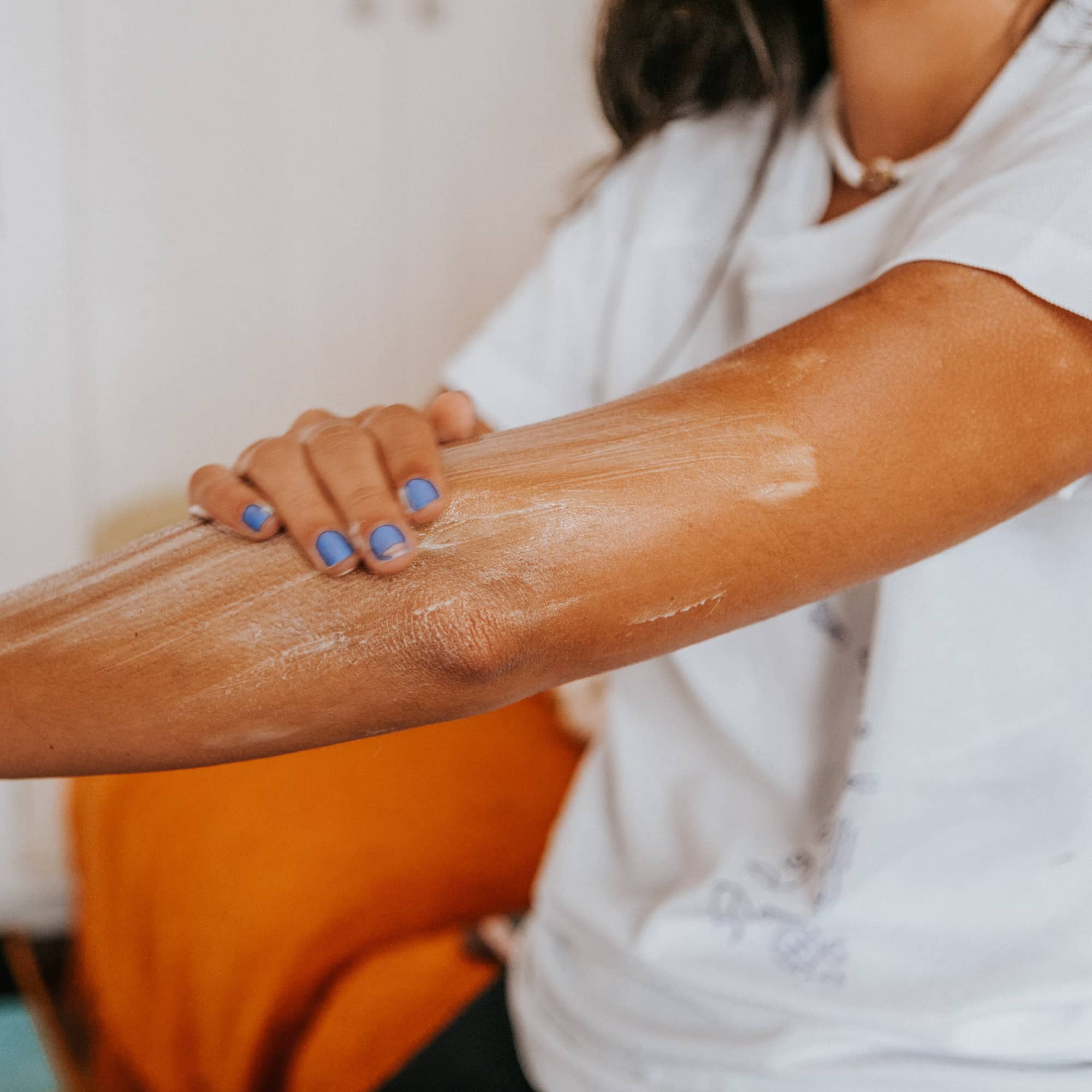
- POPSUGAR Australia
- Beauty
- What Is Oxybenzone? Here's What to Know About the Controversial Sunscreen Ingredient
What Is Oxybenzone? Here's What to Know About the Controversial Sunscreen Ingredient

- Oxybenzone is an active ingredient commonly found in chemical sunscreens.
- While the FDA-approved chemical has been deemed safe by the American Academy of Dermatology, some environmental and health groups claim oxybenzone is potentially harmful.
- In 2021, Hawaii banned the sale of sunscreens containing oxybenzone to protect its coral reefs.
Sunscreen is arguably the most important step in any skin-care routine, and if you use one regularly, then you should know that its purpose is to protect your skin from the sun’s harmful UV rays that (without the proper precautions) can cause skin cancer, dark spots, and premature aging, among other things. You may have also heard conflicting arguments about controversial ingredients commonly found in some SPF products, like oxybenzone.
If you’re unfamiliar, oxybenzone is present in many chemical sunscreens, though it’s been flagged by many organizations – particularly the Environmental Working Group (EWG) – for being potentially harmful to our bodies and coral reefs. To get a better understanding of the ingredient, read ahead as a dermatologist explains everything you need to know about oxybenzone.
What Is Oxybenzone?
Unlike mineral sunscreens that physically block your skin from the sun, oxybenzone is an active ingredient found in chemical sunscreens. “[It’s] not physical, therefore instead of sitting on top of the skin, it’s actually absorbed to filter out UV rays via a chemical reaction,” dermatologist Azza Halim, MD, told POPSUGAR.
Why Is Oxybenzone So Controversial?
While oxybenzone is an FDA-approved chemical, and the American Academy of Dermatology (AAD) considers the ingredient safe to use when it comes to human health, it’s also one of several common chemical sunscreen ingredients like avobenzone, octisalate, homosalate, and octinoxate that have been flagged by the EWG. Why? According to Dr. Halim, some research indicates that, because it can be absorbed by the skin, oxybenzone can potentially affect hormone levels in animals.
“Chemicals are chemicals with different safety profiles, and we do know that oxybenzone has been attributed to hormone/endocrine disruption, and it’s been found in breast-milk samples of lactating mothers,” she said. “Research has shown a potential link between oxybenzone and lower testosterone levels in adolescent boys, hormone changes in men, and shorter pregnancies and disrupted birth weights in babies.”
More recent research suggests that oxybenzone is damaging to coral reefs. According to the National Oceanic and Atmospheric Administration (NOAA), oxybenzone can cause defects and reproduction issues in fish, damage the immune systems of sea urchins, and impair the growth of green algae. As a result, in 2021, Hawaii became the first state to ban the sale of sunscreen products containing the ingredient.
Should I Stop Using Sunscreen With Oxybenzone?
While the data on how oxybenzone impacts human health is limited, and oversimplifying the science or calling an ingredient “good” or “bad” without a full understanding of the research can lead to misinformation among consumers, whether you choose to use the ingredient depends on your personal preference. Sunscreen is a key skin-care product to have in your routine if you want to protect your skin’s health, and the above research hasn’t been substantial enough for the FDA to rule oxybenzone sunscreens unsafe to use.
That said, if you are using a sunscreen with the ingredient in it and want to swap it out for something more environmentally friendly, you can opt for a mineral sunscreen. “The fewer ingredients in a product, the better, which is why when looking for an effective sunscreen, one can find plenty of physical sunblocks that contains only two ingredients: zinc oxide and titanium dioxide with an SPF of 50 to ward off both UVA and UVB,” Dr. Halim said.


